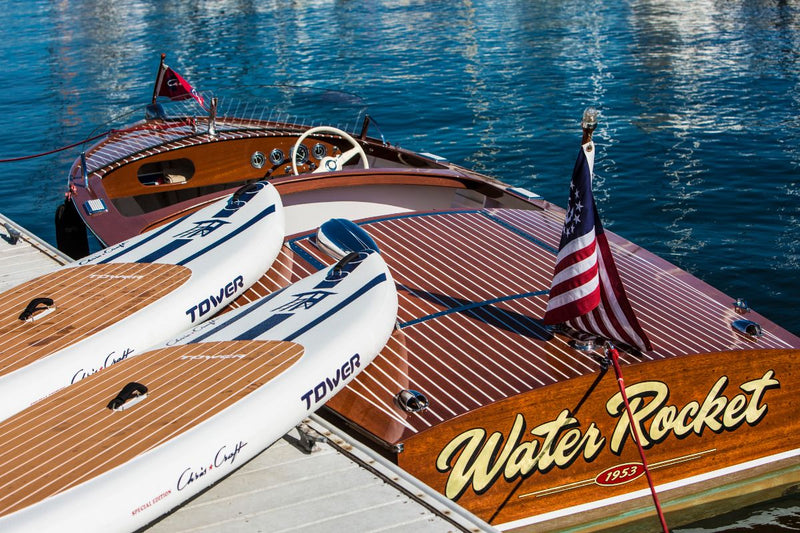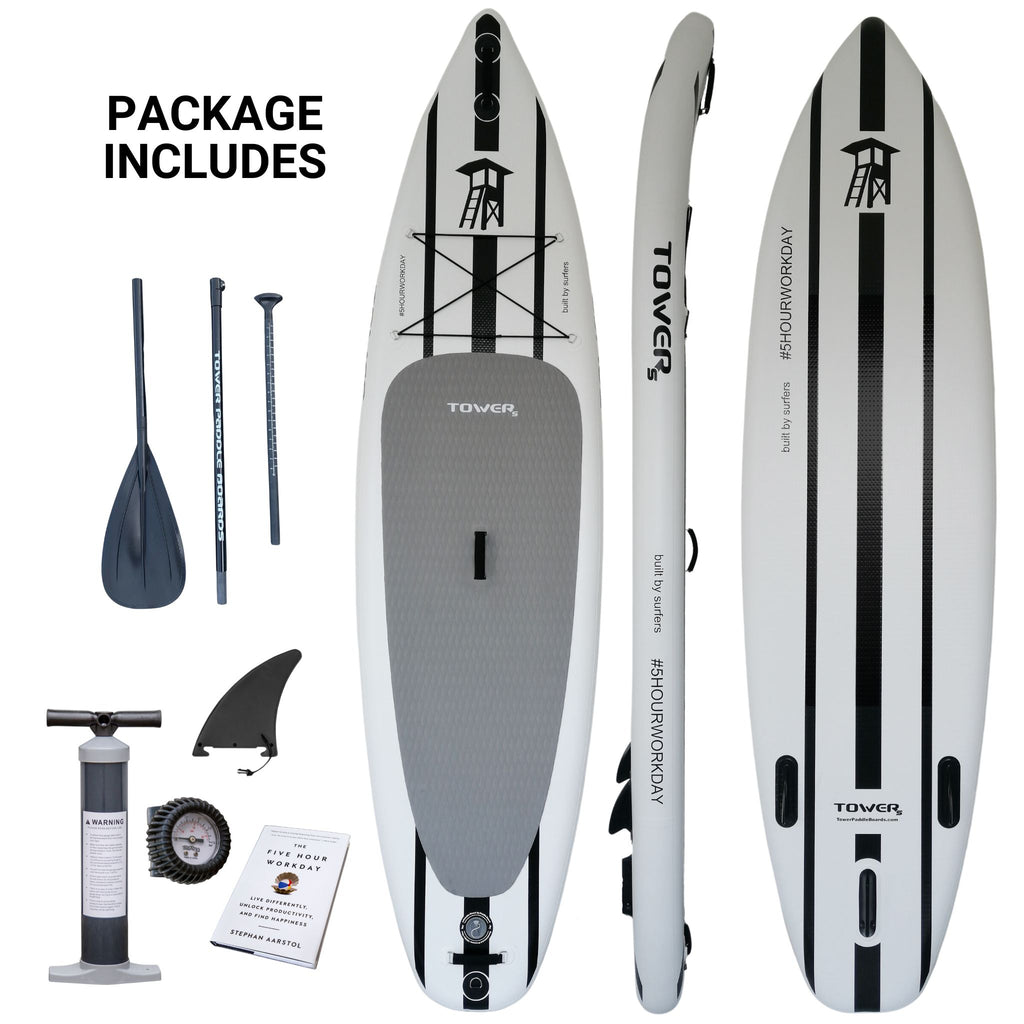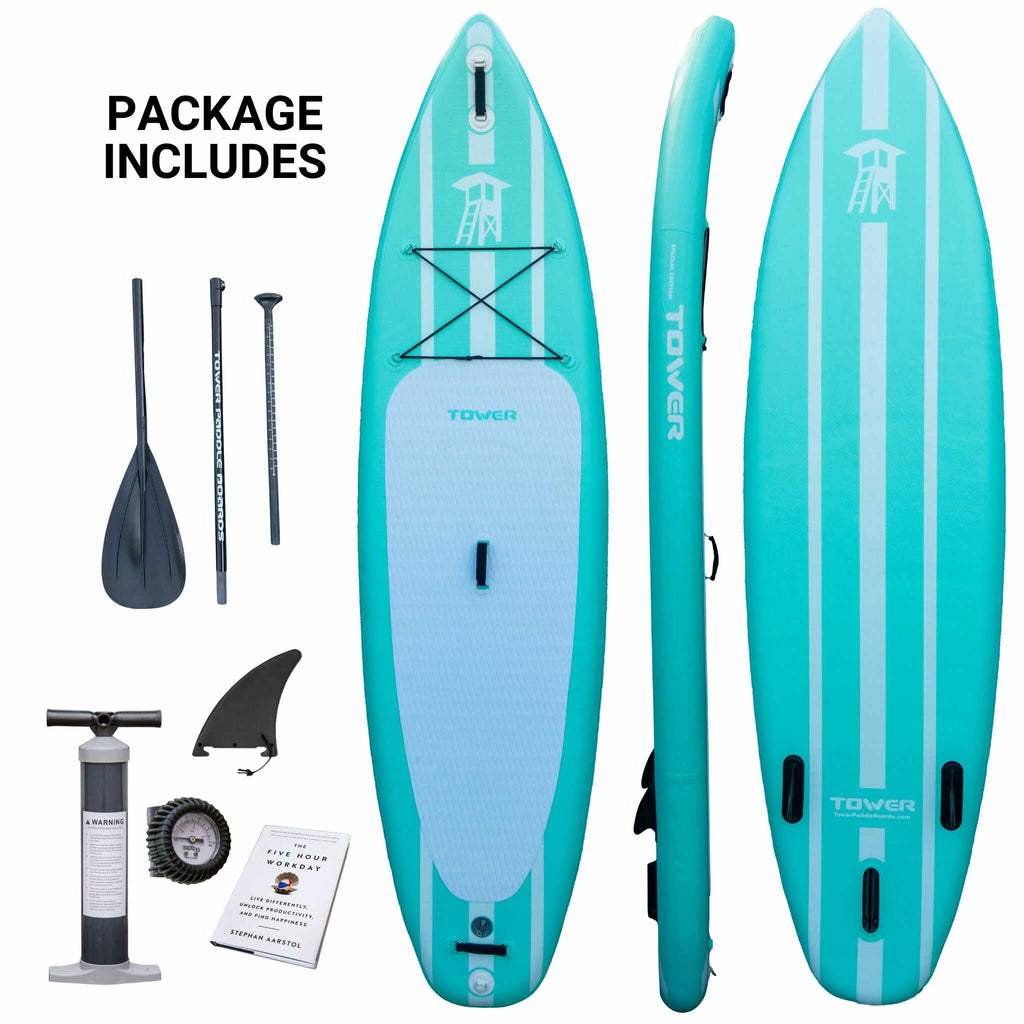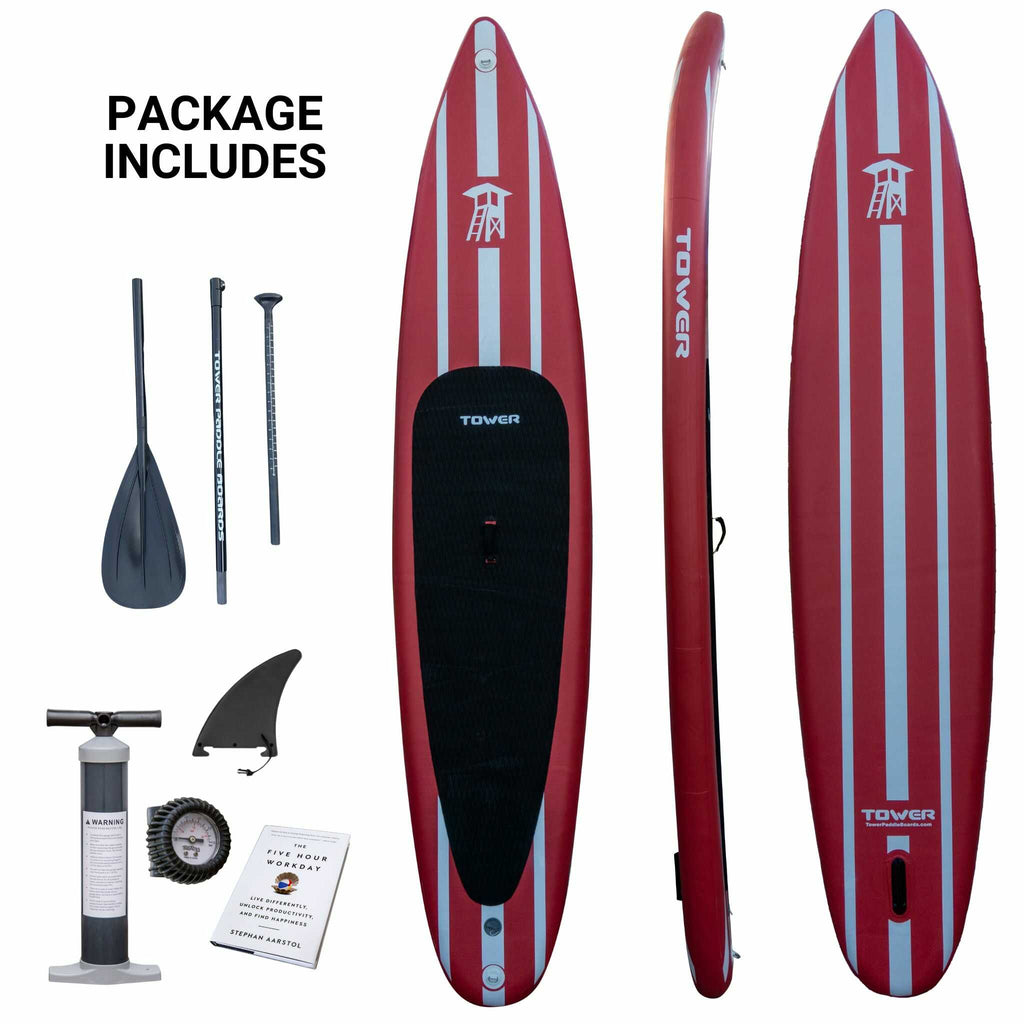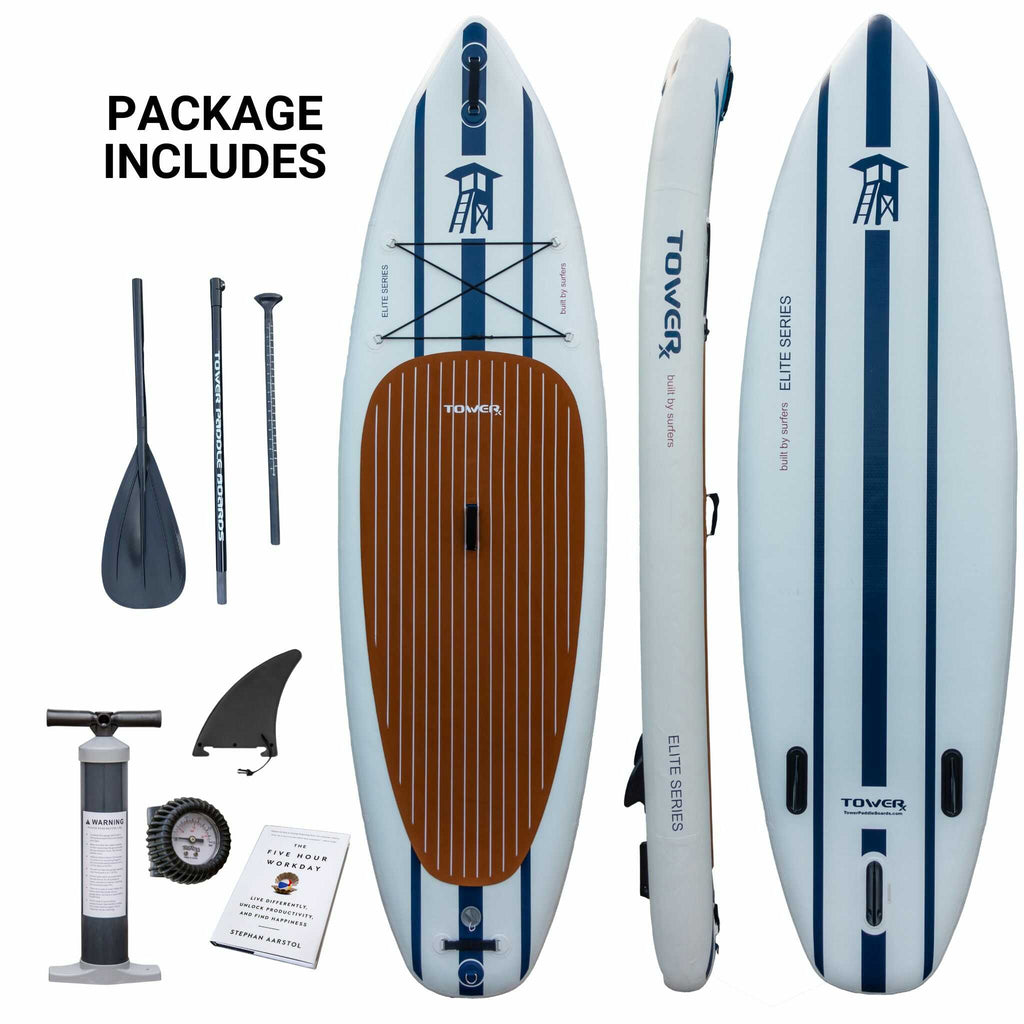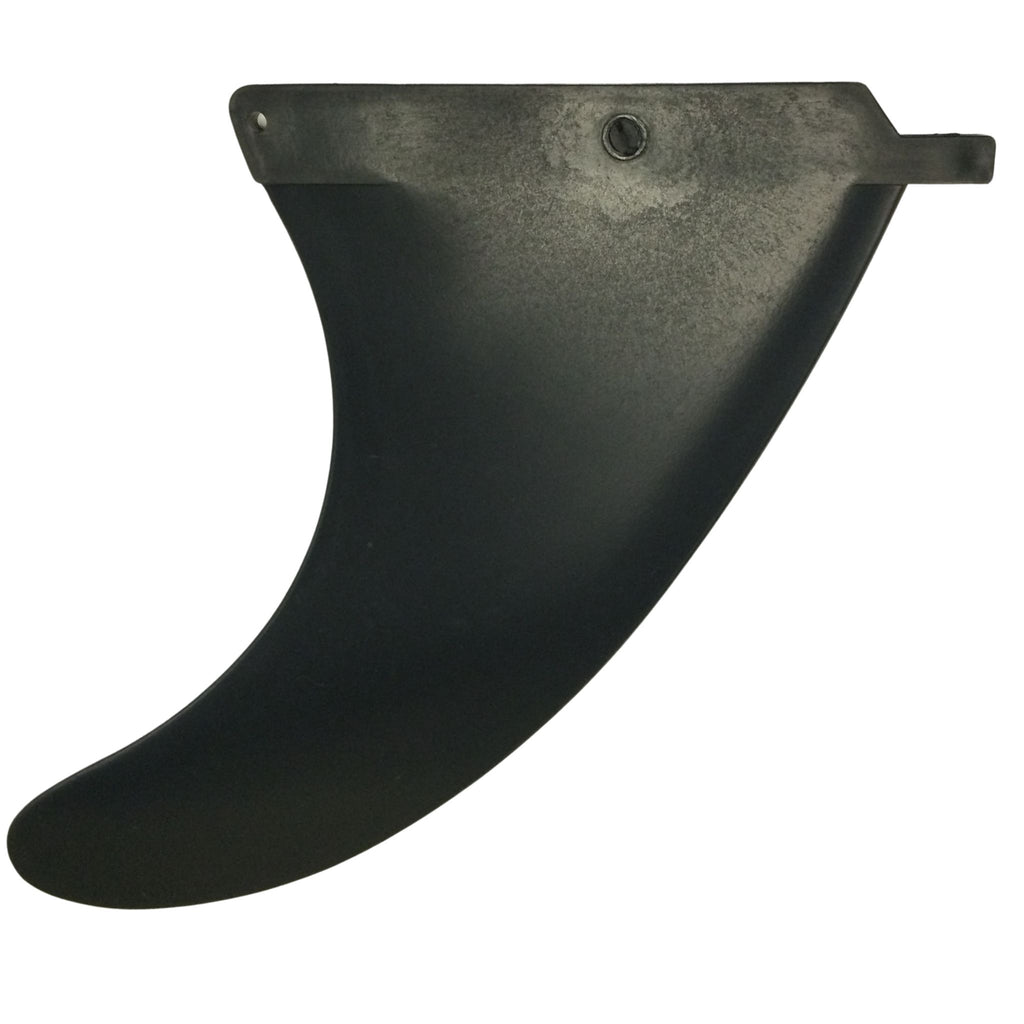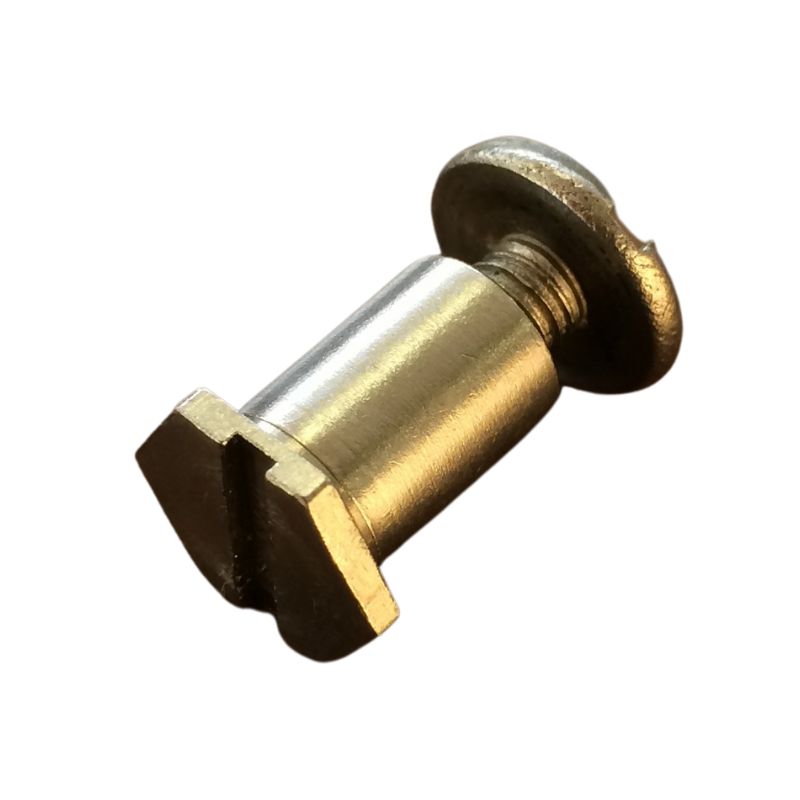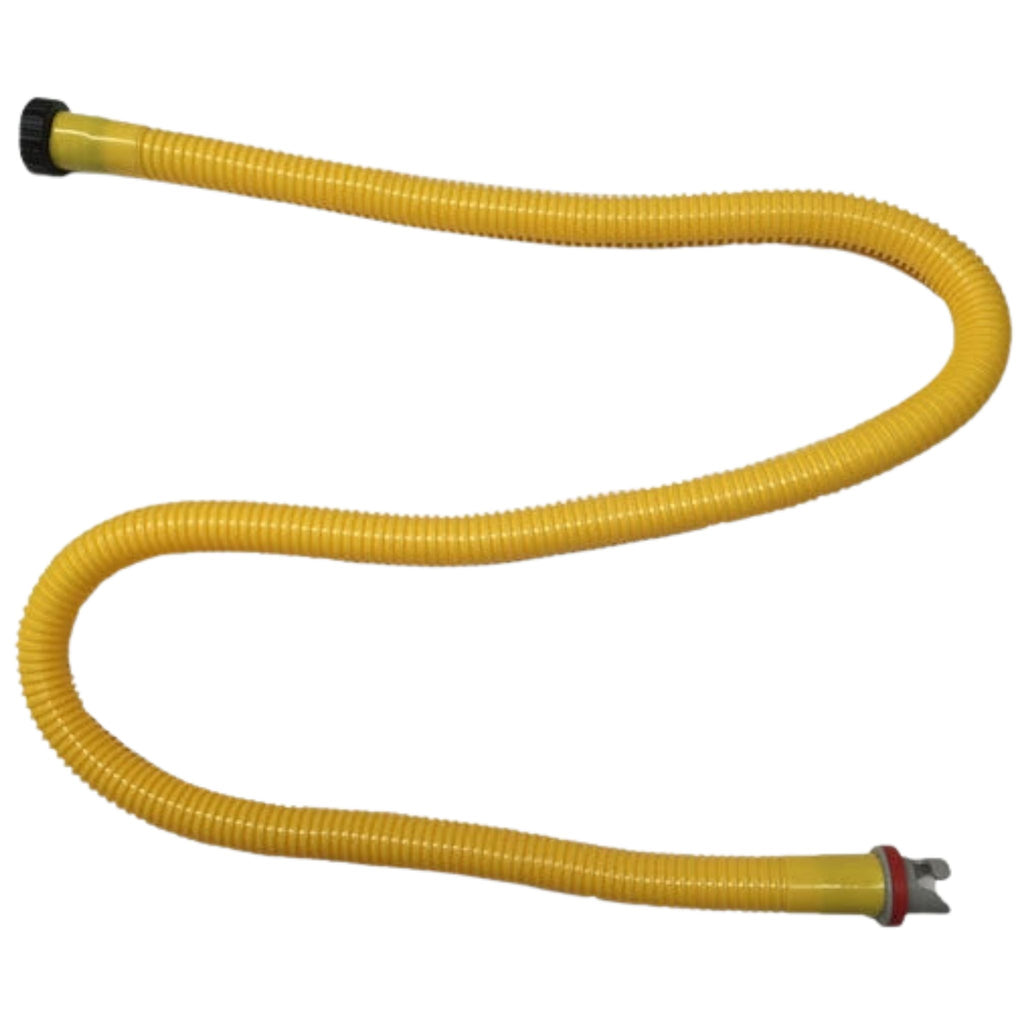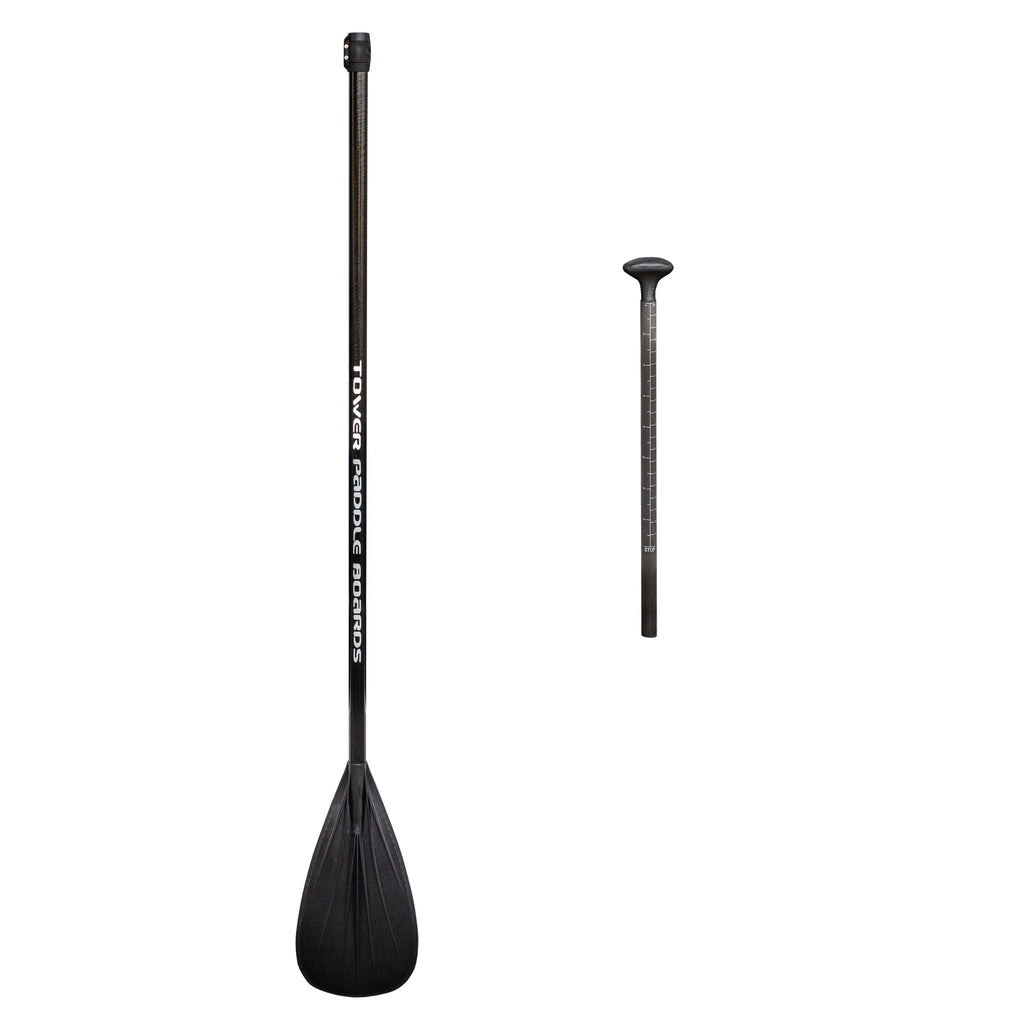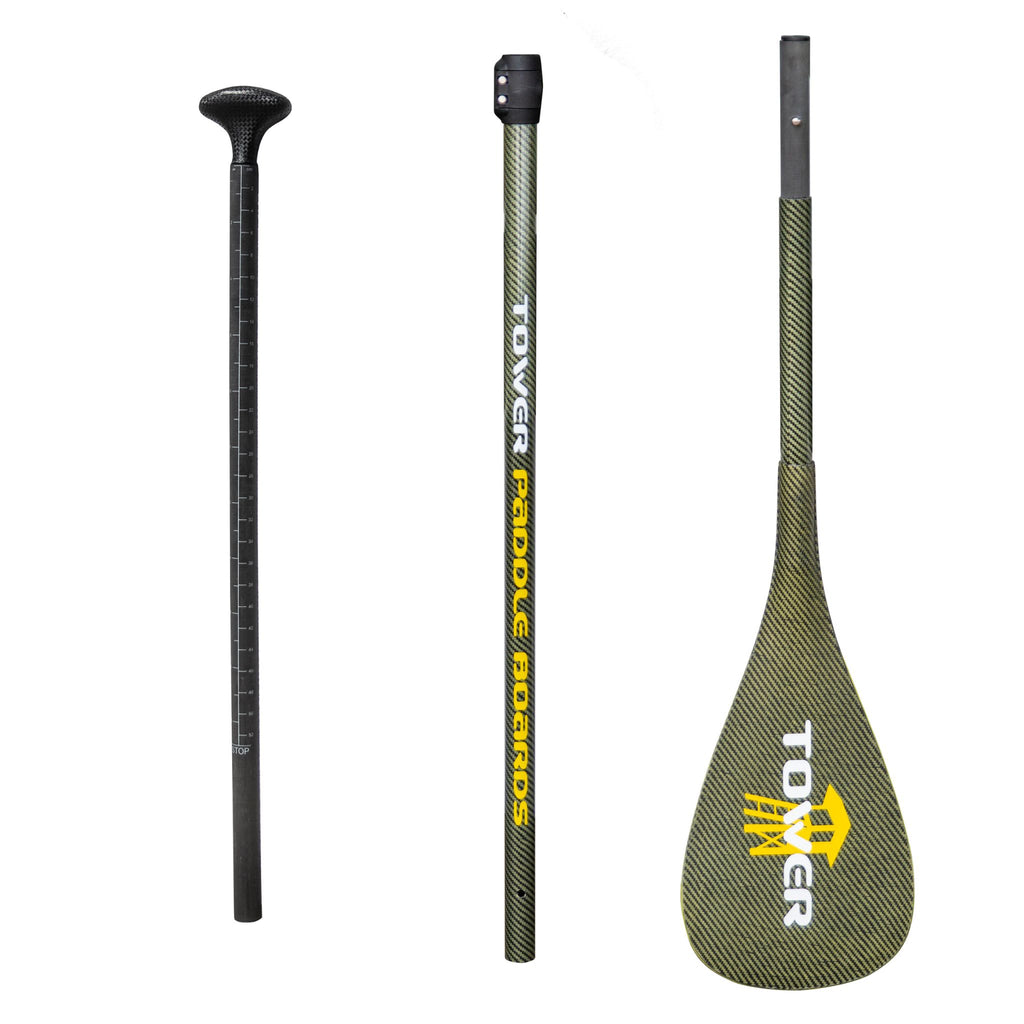Does Cost Tell You Anything About Quality?
It’s complicated to answer the question, “How much are paddle boards?” when the more important question is, “Do you get what you pay for with paddle boards?”
A great example of how misleading paddle board pricing can be is how the Tower Paddle Boards Chris Craft edition ISUP was named the #1 SUP board worldwide by the prestigious Robb Report in 2017 over competitive brands’ boards that were priced as high as $3,399. In the article, our board was listed as priced at $1,785, which was in the middle of the range of the five boards featured from known brands including Naish and Starboard. Our board was the only inflatable SUP in this top five ranking, and it still beat out all of the more expensive hard-top SUPs on the list. The ironic thing is that the Tower Chris Craft edition was, at the time, sold for only $649 in our direct-to-consumer business model: The $1,785 price was just our comparative price of what it would likely go for in a retail store. So while the Chris Craft edition ISUP is one of the best in the world, it comes in at a fifth of the cost of the most expensive board in that group.

The reason that Tower Paddle Boards was founded was because when the owner of the company went to shop for his own stand-up paddle board in 2010, he quickly learned that it didn’t make sense how much paddle boards cost. At the time, an all-around paddle board from retail stores would cost $1,200 to $1,600 for a basic beginner board similar to an oversized surfboard. It’s possible to buy a basic surfboard for about $400, so it made no sense how much paddle boards were selling for. He realized that SUP boards could be produced at the same factories as the best retail brands and then sold direct to consumer for less than half the price.
Tower Paddle Boards was born, and the consumer-direct business model took over the stand-up paddle board market. A year later, in 2011, Tower was a pioneer in inflatable paddle boards by making them 6 inches thick, which changed the market again: Inflatable SUPs went from less than 1% of the market to more than 70% in about five years. Selling both traditional hard SUPs and ISUPs direct to consumer at half the price of comparable retail boards, we quickly became an industry leader. After being named the #1 fastest-growing private company in San Diego in 2014 and #239 on the Inc. 500 list of America’s fastest-growing companies in 2015, Tower was named a top 5 brand worldwide in the SUP market in 2016.
Quick Links
- Paddle Board Cost Myth-Busting
- Sales Channel Affects Price the Most
- Retail Store SUP Pricing
- Paddle Board Price on Amazon
- Direct-to-Consumer SUP Pricing
- ISUP Pricing Versus Hard SUP Pricing
- Paddle Board Components and Quality for ISUPs
- Paddle Board Components and Quality for Hard SUPs
- How Much Are You Paying to Be Advertised To?
- Do You Really “Get What You Pay For”?
Paddle Board Cost Myth-Busting
Because we successfully took on the SUP market from a paddle board price perspective, we know a bit about paddle board costs and what drives them in the market. Our founder even authored an article for Fast Company in 2013 on price-fixing in the paddle board industry. If you search for “how much are paddle boards?” you’re likely to find a bunch of bogus information. You’ll find uninformed writing on paddle board prices by shady affiliate marketers, and you’ll also find people and SUP brands intentionally giving online readers misinformation. The crux of this misinformation is that in paddle board pricing, as with most products, the notion everyone touts is “you get what you pay for.” While that used to be true, in the modern world of online and direct-to-consumer shopping, it’s not always true that you get what you pay for. And it’s certainly not true about the stand-up paddle board price range of today’s market.
Sales Channel Affects Paddle Board Pricing the Most
There is a huge stand-up paddle board price range, with some boards costing as little as $200 and others as much as $3,000. The “you get what you pay for” idea suggests that buying a cheap board means you’re getting a shoddy product but the expensive boards are only for special uses, meaning that you should buy a paddle board priced somewhere in the middle. That sounds good, but it’s baloney. The truth is that the average cost of a paddle board has less to do with the quality of the product you’re getting and more to do with the sales channel you are buying it through and the intentional price positioning of the brand.

Retail Store SUP Pricing
If you shop at a traditional retail store, which is the channel 80-90% of paddle boards are purchased through, you are likely to pay three to five times the cost of production. So if a SUP board costs $350 to produce in a factory, you would pay from $1,050 to $1,750 in a retail store. You’ll also know that the product has been properly vetted by the retailer. If the board doesn’t do well and it’s returned often, then the retailer has to deal with the return, so that brand won’t last long on their shelves. Retailers offer a curated brand selection and convenience, but you’ll pay for that convenience. Retail stores have a lot of middlemen: the factory, the brand, distributors, sales people, freight to move stuff around, the retailer themselves, and advertising and marketing. Each middleman takes a cut, and that’s how a $350 factory cost turns into $1,400 in a store.
Within retail, however, different retailers operate on different margins. A massive discounter like Walmart or Costco has economies of scale, so they can offer products at far more competitive pricing than a specialty SUP shop or even a smaller mass retailer like Dick’s Sporting Goods. If you insist on buying at retail, getting a Costco paddle board is probably your best bet, but be aware that the SUP brands sold at Costco tend to flourish and then die as Costco chews them up and spits them out, so you may be buying a board from a brand that will no longer exist in a few years. Also, it’s important to note that there is a high return rate on ISUPs sold at Costco, so there’s a fair chance that you may end up needing to return your board.
Paddle Board Prices on Amazon
Amazon is an online marketplace that’s become so dominant that it is, in part, responsible for disrupting the entire retail ecosystem of how and where people buy products. Physical stores are reeling as more shoppers buy online, and more of that online shopping is going through Amazon. More than 60% of online purchases in the U.S. are through Amazon today, which is up dramatically from less than 10% when Tower was started in 2010. Tower Paddle Boards sold millions through Amazon, when it made sense for our business and our customers. We were even kind of the poster child for selling on Amazon for a while. We were featured in Amazon promotional videos, and Jeff Bezos even name-dropped Tower Paddle Boards in his 2016 annual letter to shareholders. Harvard also wrote a case study on "Selling on Amazon at Tower Paddle Boards," and our founder has spoken at Harvard Graduate School a half-dozen times on the topic.
Tower didn’t sell on Amazon in our first few years, but in 2013, once we were able to keep up with our direct-to-consumer demand, we began to sell paddle boards through Amazon. In 2016, we sold almost $400,000 in paddle boards in one day through Amazon. Amazon was good for a while, but over the years, the revenue share they took out of each sale started to become too much like traditional retail markups. Combined with the advertising cost necessary to get found on there, the markup was approaching 50%, and it has only gotten more expensive to do business on Amazon as the marketplace gets more crowded.
Today on Amazon, you have two groups offering paddle boards for sale, and they are at different price points.
Ad-Heavy Brands
On one hand, you have a number of brands that copied our early success at Tower in selling ISUPs on Amazon but don’t the same brand recognition, so they spend heaps of money on advertising to drive sales. They price their boards from $600 to $1,000 and are content with Amazon taking a 40-60% cut of all of their sales, once you factor in the revenue share, shipping and storage costs, and the heavy Amazon advertising required to be found in an increasingly crowded marketplace. So if you buy a $700 paddle board, Amazon takes around $350 off the top and the brand you bought from gets $350. Either the brand is making no money off of this endeavor, or they are selling low-quality inflatable paddle boards, which are now widely available from fly-by-night factories using questionable materials and construction methods.

Chinese Non-Brands
In 2015, Amazon started pro-actively recruiting Chinese manufacturers to sell directly through their marketplace in every product category, including SUPs. The top paddle board factories didn’t really start doing this, as they have thriving production operations, but many smaller factories did. Every week at Tower, we get a new random Chinese factory offering to make paddle boards for us at a “great price,” and we just ignore them, as the quality of their products is questionable. But on Amazon, a bunch of random paddle board designs from a rotating list of random company names started popping up in the price range of $200 to $500. They’d appear one day and then have hundreds of fake reviews in a few months. Then, a brand would disappear and another would take its place. It’s Amazon, so you can always return stuff, but it’s really becoming difficult to understand if what you are getting is a quality product or not. All you have to go off of is the price and the reviews (more and more of which are fake reviews today). If you’re buying a $200 paddle board on Amazon from a Chinese non-brand, that brand is only getting maybe $100. You’re not getting much of a paddle board for that. And you’re getting even less customer support when things go wrong. It’s difficult enough navigating this as a seasoned brand, but for consumers, it’s near impossible.
The Chinese non-brand product problem on Amazon is getting worse fast. U.S. consumers are just becoming aware of this, but full awareness is probably five years away. The graph below shows the change in percent of Amazon sales that are of products from U.S.-owned brands between 2016 and 2019. It dropped from 85% to 45% in three years! Amazon recruiting Chinese manufacturers to sell directly through Amazon is what’s going on here. The net effect is that Amazon takes their retail cut from a rotating army of here-today, gone-tomorrow Chinese non-brands that sell products of unknown quality, and increasingly, fewer and fewer U.S. brands get any share of the market.

Direct to-Consumer SUP Pricing
Another major factor that is disrupting the retail ecosystem is direct-to-consumer-only brands, also called “DTC brands.” They are disrupting every industry. High-profile brands like Warby Parker (in fashionable prescription glasses), Allbirds (shoes), and Tesla (electric cars) are offering better-quality products and better prices by only selling direct to consumer. No middlemen are involved in direct-to-consumer commerce. Tower was a pioneer in selling paddle boards direct to consumer for half the cost of a comparable SUP board at retail. It’s why we’ve had so much success and why you will find our paddle boards all over the world. If you'd like to see which Tower Paddle Board best suits you, take our handy paddle board finder quiz.
When selling direct to consumer, if a paddle board costs $350 to produce, we only have to mark up the price once. A retail store’s paddle board price might be three to five times the production cost, and Amazon takes 50% of the price of anything sold through its marketplace, but we only have to charge a little bit more than a product costs to produce to maintain profitability and be a sustainable brand in the long term.
ISUP Pricing Versus Hard-Board Pricing
Hard (epoxy) SUPs are more expensive than inflatable paddle boards because they cost more to produce. The foam, fiberglass, resin, traction pad, fins, and inserts like handles, fin boxes, and leash plugs are expensive, and there’s a considerable amount of labor involved to put it all together. It’s just more expensive to make a quality hard board than it is to make a quality inflatable paddle board, and that’s just for a basic board. When you start doing exotic hard-board construction with carbon-fiber materials, high-density foam sandwich construction, and wood laminates on the exterior shell, the costs rise quickly.
In addition, a hard paddle board is around 10 feet long and 3 feet wide when it’s boxed up, so it’s expensive to ship. A shipping container can fit around 100 hard boards, but it could fit almost 600 inflatable paddle boards deflated and boxed up. Want to send a five- or ten-pack to a distribution warehouse or specific retail store via an LCL (less-than-container-load) shipment? That’s not cheap, either. And if you’re going to send a single hard SUP to a customer, that can cost from $200 to almost $700, even if you ship them all the time. It could be more if you ship one one-off. And if you want to ship a single hard SUP internationally, it will cost you way more than $1,000. On top of this, as hard boards are somewhat brittle, they are also far more likely to get damaged in transit; perhaps 5% (or 15% if they’re not boxed very well) get damaged during shipping.
Inflatable paddle boards require a lot of labor during production, and you have to use high-quality materials if you want them to last, but at the end of the day, the inflatable SUP price is low because they are still less expensive to produce and ship than hard boards. If you want to make a very high-quality one with double-layer, hand-glued seams, the cost of inflatable paddle boards’ production begins to get closer to that of hard SUPs, but it’s still less on average. Fortunately, when you need to transport ISUPs, they roll up to about the size of a sleeping bag and can be shipped in a box that’s about 3 feet by 1 foot by 1 foot and weighs in the mid-30-pound range. This means they are fairly cost-effective to ship via UPS or FedEx domestically and even reasonably cost-effective to ship internationally.
Paddle Board Components and Quality for ISUPs
The quality of an inflatable paddle board is quite difficult to ascertain just from looking at it. You can see if it’s got a great design, but that’s about it. Without inspecting it closely, you can’t even see and feel the quality of the materials or if there are bubbles or irregularities in the surface. Even if you can inspect it up close, you have no idea of the quality and configuration of the drop-stitch fabric used, which is the heart of the strength and rigidity of an inflatable paddle board. The most critical element of the durability of an inflatable SUP is the adhesion of the seams. It’s basically a series of malleable PVC strips that are glued together around this core double-sided piece of drop-stitch fabric. If those seams fail, your inflatable paddle board goes to the landfill.
There are a couple of different methods of construction involved with inflatable paddle boards, some better and some worse. Some techniques have been proven with decades of reliable performance, and some are new and relatively untested. Then you have the fact that the majority of inflatable paddle boards are made in China or South Korea, with drop-stitch materials produced in those places as well. As the ISUP industry exploded, numerous factories popped up to make inflatable paddle boards and used different methods to try to cut their costs. A lot of these were unwise cost-cutting measures. You also see a lot of new brands getting into inflatable paddle boards because they saw others doing well there, but they don’t know what they’re doing and they’re relying on factories that aren’t honest with them and don’t have the skillset required to make good products. Thus, you end up with 100 inflatable paddle board brands and Chinese non-brands available to consumers, and quality is all over the map. That translates into product recalls by less than careful brands, which we've seen a lot of in the last few years.
Because of this, you have to know and trust the brand you go with. Research what their track record is. If you can’t find a track record or a history of a brand, beware. At Tower Paddle Boards, we’ve been making inflatable paddle boards since 2011, and we were a pioneer in creating 6-inch-thick ISUPs, which changed the entire paddle board industry.
Paddle Board Components and Quality for Hard SUPs
There are a number of factors that go into the production cost of hard (epoxy) stand-up paddle boards. The main thing to know is that there are two primary forms of hard-board SUP construction: traditional layup and molded construction.

- Traditional Layup: The first hard board construction method, referred to as traditional layup, is where an EPS blank is shaped and then covered with fiberglass cloth and resin in a pattern of laying, drying, and sanding layers. While it’s not horrible, this is the lower-quality and less durable of these two methods.
- Molded Construction: The second hard board construction method is molded construction, in which a mold is created, the exterior of a hard SUP is individually pressed into this mold, and then the inner foam is blown in. With this type of construction, you can do what’s called sandwich construction on the outer shell, where the different materials are sandwiched together to create a stronger shell. For example, you could have an inner fiberglass layer, then a thin high-density foam layer, then another fiberglass layer. Often, wood laminate will be one of the layers. Our wood stand-up paddle boards are made with this method, and it’s a significantly more expensive technique for paddle board construction. Since Tower sells direct to consumer, these boards are offered at incredible prices; while they’re not the cheapest SUP boards on the market, they are among the best value high-quality hard boards on the market.
Another variable you will find in a lot of racing boards, because of the weight-to-strength ratio, is the addition of exotic materials to the shell like carbon fiber. This can add considerable amounts to the production cost, but it’s not responsible for one board costing $1,000 and another costing $2,000. That has more to do with brands setting prices at whatever they want because they understand that consumers’ #1 association with quality is price. They have premium pricing because they know the higher price will make you trust and covet their products more.
How Much Are You Paying to Be Advertised To?
In today’s online space, it’s becoming more of a pay-to-play environment. Close to 60% of online sales in the U.S. go through Amazon, and they take a cut of each sale. With their marketplace getting crowded, they’re now more of an advertising channel than a store, so anyone on their platform has to pay them not only a share of all sales but an increasingly large advertising bounty to get found. For the rest of the Web, the non-Amazon piece that’s slowly shrinking called Google still has a dominant position in product search. As Amazon has displaced Google as the market leader in product search, Google has had to try to maintain revenue with an increasingly smaller slice of the pie. That means that organic search results (unpaid results that earned their way in because of good content or being a highly trusted brand) are being relegated down the page to make room for more money-earning paid advertising spots and related Google-owned content. The net result of all of this is that it’s more pay-to-play, or you can't be found. Either a brand sells and advertises through Amazon so they can be found and gives them 40-50% of each sale, or they advertise on Google to be found and give Google 40-50% of each sale in ad fees. As efficient marketplaces, both of them gravitate toward a world where brands fight it out to get found while the company controlling the marketplace takes all of the profit. It sounds a little dismal, but this is where e-commerce has gone, aside from independent direct-to-consumer brands that hack growth and try to figure out how to advertise as little as possible.

At Tower Paddle Boards, we flat-out refused to advertise for the first four years of our existence. That was partially because we couldn’t keep up with demand as it was but partially because we felt that it was a better idea to pass value on to consumers. Thereafter, we kept a pretty healthy disdain for spending on advertising. In the first 12 years of the company, we spent less than 3% of our sales on advertising costs. Many brands spend 10x that. If you’re buying a $600 ISUP from us, that means we (well, you, really) spent less than $20 on advertising for you to find us. We’re a pretty rare brand in the paddle board industry, and many brands that have copied our success in inflatable paddle boards are what we call “ad-heavy brands.” It’s not uncommon for them to spend more on advertising than they do on producing the product you bought. Consider that next time you click on an ad while researching your paddle board purchase.
Do You Really “Get What You Pay For”?
What it all boils down to is that when you are looking at the cost of a paddle board, the actual board is only a small piece of the puzzle. A lot of the cost of many boards comes from the ads that sell them to you and the distribution channel they’re sold through: The actual production cost of a board is a distant third. You’d think that the answers to “how much do paddle boards cost?” and “how much are paddle boards worth?” would be the same, but no: Often, that’s far from true. Rather than the old adage of “you get what you pay for,” it’s more like “you get what it costs to get you to buy it.”
However, there is another way. When you buy direct-to-consumer from a brand like Tower Paddle Boards, you aren’t paying excessively for advertisements and you're not paying any retailer markups. You’re paying for the quality of the product you’re buying. Brands like ours offer amazing products and amazing value, relying on our satisfied customers to spread the word about us. It’s getting tougher for new brands to do this these days, but we’re here for you.









